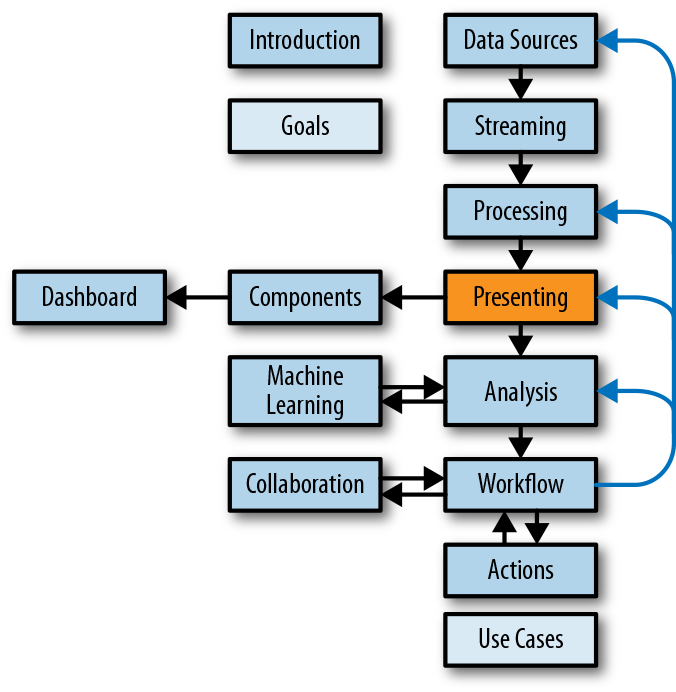Chapter 7. Presenting Streaming Data

This chapter introduces some topics and elements to consider with regard to presentation. It can be used like an idea generator that you revisit as needed to see if any of the mentioned elements make sense to incorporate.
Staring at thousands or millions of raw records is not very efficient or sustainable for any goal. It’s important to know what the raw data looks like, but only in order to understand what would be interesting to summarize in a more friendly format. Visualizations are that friendlier format. They engage a different part of the brain that understands color, spatial references, and patterns. Visualizations have such an immediate impact on the viewer that they are often used to imply a conclusion from data. This is why there is a natural division in data visualization goals among sales, reporting, and analysis.
Visualizations can be employed to more effectively achieve all of these goals. They can take overwhelming amounts of information and present it in a way that can be easily understood. A “sparkline” can show a pattern of values over time, including the minimum, maximum, average, first, and last values, all within a space that is typically reserved for just a couple of values. This represents a huge increase in data density. Visualizations can also be used to tap into a common lexicon of meaningful images and styles. Translating ...
Get Visualizing Streaming Data now with the O’Reilly learning platform.
O’Reilly members experience books, live events, courses curated by job role, and more from O’Reilly and nearly 200 top publishers.

